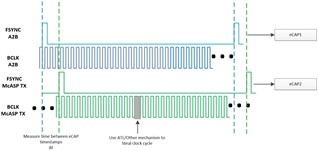Tool/software:
We are working with a system based on the AM62X, designed for audio applications. It uses three TDM lines:
- McASP0 – receives all clocks externally, including FSync, BitClk, and MClk
- McASP1 – generates FSync and BitClk from an external MClk
- McASP2 – also generates FSync and BitClk from the same external MClk
Since all TDM lines share a common external MClk, they are effectively driven by a single clock source.
I would like to understand how to ensure proper synchronization at startup—specifically, how to align all FSync signals to avoid jitter or phase misalignment.



